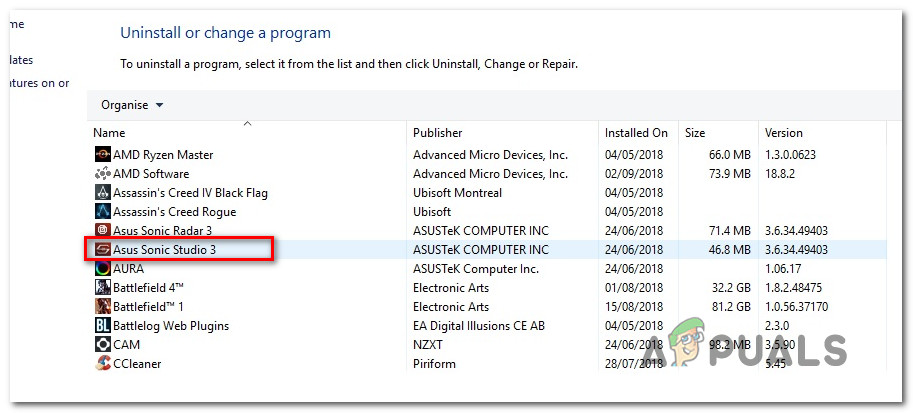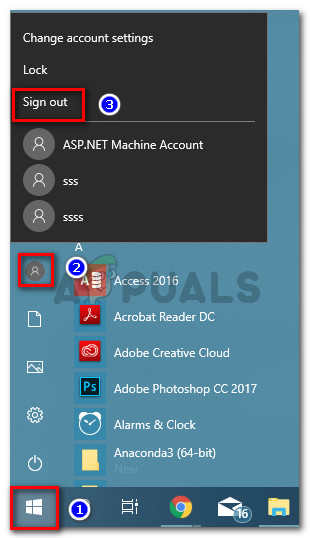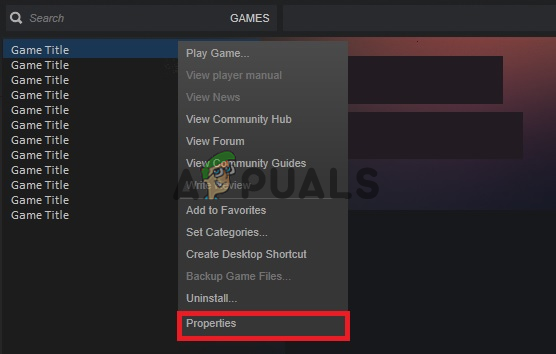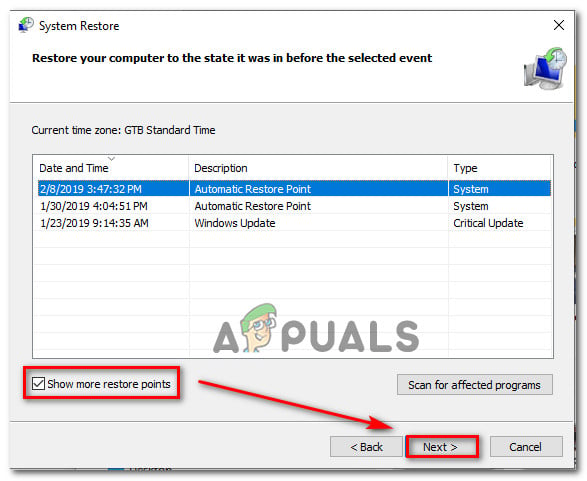Fix: No Sound on Steam Games on Windows 10
Several Windows 10 users are reporting that they aren’t able to hear any sound when trying to play games via Steam. While some affected users are reporting that the issue started occurring after a Windows update, others report that they were encountering the issue immediately after they installed Steam. In all cases, users report that audio is functioning properly with non-games applications like VLC, Chrome, Spotify, etc.
Related Reads: How To Fix Steam Disk Write Error

What is causing the No Sound Issues with Steam on Windows 10?
We investigated this particular issue by looking at various user reports and the repair strategies that most affected users have successfully deployed in order to resolve the issue.
Naturally, we started out by eliminating potential culprits from the list. As it turns out, the issue is not hardware-related because the issue is confirmed to occur on all kinds of specifications from high-end PCs to entry-level laptops. Also, the issue doesn’t seem to related to the general Audio driver because the sound is working normally with the rest of the applications.
Based on our investigations, we managed to identify a few potential culprits that might end up triggering this particular behavior:
- 3rd party sound manager is conflicting with the built-in sound manager – Sonic Studio III, Nahimic and MSI AUdio are all sound managers that are known to trigger this particular issue. This happens with Windows 10 version newer than build 1803. If this scenario is applicable, you can resolve the issue by uninstalling the 3rd party sound manager.
- Two users are logged in at the same time – As several users have reported, this issue is known to occur if two different Windows user accounts are logged in at the same time. This scenario might confuse the built-in sound manager to send the sound to the wrong user account. In this case, you can resolve the issue by logging out of the unnecessary user account.
- Corrupted / Incomplete game cache folder – There are confirmed instances where the issue was actually occurring because the game folder was missing some files or some game files were touched by corruption. In this case, Steam will most likely be able to resolve the issue if you force the client to verify the file cache integrity of the game.
- Realtek HD Audio driver is causing the issue – In the vast majority of cases, the driver used when this particular issue is encountered is Realtek HD Audio. Turns out that it might also be responsible for the no-sound problems with Steam since some affected users have reported that the problem was resolved after they made the switch to the Generic Audio driver.
If you’re looking to resolve this particular problem with the sound on Steam games, this article will provide you with several troubleshooting steps that other users in a similar situation successfully used to get the issue resolved.
But keep in mind that depending on your particular scenario, not every potential fix will be applicable to your scenario. With this in mind, we encourage you to follow the methods in the order that they are presented until you find a fix that is effective in your situation.
Method 1: Uninstalling Sonic Studio III /Nahimic / MSI Audio
As it turns out, this particular behavior often appears due to a conflict between Sonic Studio III (which comes bundled with a lot of ASUS products) and Windows 10 versions older than build 1803. This happens because Sonic Studio III includes some features capable of redirecting audio from applications to different audio outputs.
Update: We’ve been able to confirm that the conflict is also occurring Nahimic and MSI audio. It turns out that several different sound managers will trigger this particular conflict.
This is great functionality to have, but a Windows update introduced with version 1803 provides an almost identical feature. Obviously, the two will end up conflicting and this is reported to happen even when redirection is not active – just having Sonic Studio III installed is enough to cause the conflict.
If this scenario is applicable to your situation, you will be able to resolve the issue by removing Sonic Studio III from your computer. Here’s a quick guide on how to do this:
- Press Windows key + R to open up a Run dialog box. Then, type “appwiz.cpl” and press Enter to open up Programs and Features.

Type appwiz.cpl and Press Enter to Open Installed Programs List - Inside Programs and Features, look through the list of applications and locate Asus Sonic Studio 3 / Nahimic or any other sound manager that you might be using. When you see it, right-click on it and choose Uninstall.

Uninstalling Asus Studio 3 Note: If you also have Asus Sonic Radar 3 installed, you might need to uninstall both in order to eliminate the conflict.
- Follow the on-screen prompts to complete the uninstallation, then restart your computer.
- Once the next startup is complete, launch the game (via STEAM) that you previously had no sound with and see if the error has been resolved.
If you’re still not able to hear any sound in the Steam game, move over to the next method below.
Method 2: Logging out any other users
Another popular scenario in which this particular error occurs is if the two different users are logged on at the same time. As it turns out, this might end up confusing the Steam client into redirecting the sound to the wrong user.
Let’s consider the following scenario – Person A and Person B are both logged into the same Windows 10 computer at the same time. When the game is launched by Person B, audio is not working. But audio is working for person A.
If this scenario is applicable to your situation, you can resolve it by doing the following:
- While logged in as Person A, press the Windows key to bring up the Start menu, then click on the User icon and select Sign-Out.

Logging out of the local account Note: Keep in mind that switching the users directly instead of logging out of the A account first will still produce the same error.
- From the Log-on menu, log in with user B and launch a Steam game.
If you’re still encountering the same problem with audio, move down to the next method below.
Method 3: Verifying the file cache integrity of the game
If you’re only encountering the issue with one specific game, it’s possible that a game update might have not installed completely or you’re dealing with some file corruption. Several users that found themselves in a similar scenario have reported that the issue was resolved after they verified the integrity of the file cache via Steam menus.
Here’s a quick guide on how to do this:
- Open your Steam client, go to the Library tab, right-click on the game that you’re having sound problems with and choose Properties.

Opening Properties screen on Steam - Inside the Properties screen of the game, go to the Local Files tab and click on Verify Integrity of the Game Cache.

Clicking on the “verify the integrity of game cache button” - Wait until the process is complete, then restart your Steam client once the integrity is verified and fixed.
- Open the game and see if you’re still having sound issues.
If you’re still unable to hear any sound with this game or this scenario wasn’t really applicable to what you’re encountering, move down to the next method below.
Method 4: Switching to the Generic Windows Audio driver
Several affected users have reported that in their case, the issue was resolved as soon as they changed their active sound driver from Realtek HD Audio to the Generic Windows Audio driver. Although there’s no official explanation of why this fix is effective, some users are speculating that using the genuine Windows driver eliminates the conflict with different sound managers.
Here’s a quick guide on making the switch to the Generic Windows Audio Driver:
- Press Windows key + R to open up a Run dialog box. Then, type “mmsys.cpl” and press Enter to open the Sound window.
- Inside the Sound window, go to the Playback tab, select the active Playback device that you’re having issues with and click the Properties button.
- In the Properties screen of your playback device, go to the General tab and click the Properties button associated with Controller Information.
- Inside the newly opened menu, go to the General tab and click on Change Settings.
- Inside the High Definition Audio Device properties, go to the Driver tab and click on Update Driver.
- When you get to the Update Drivers screen, click on Browse my computer for driver software.
- In the next screen, click on Let me pick from a list of available drivers on my computer.
- Next, make sure that box associated with Show compatible hardware is checked, then select High Definition Audio Device and click Next.
- When prompted by the Warning prompt, click Yes to confirm the installation.
- Wait until the installation is complete, then restart your computer and see if the issue is resolved at the next startup.

If you’re still unable to hear sound with Steam games even after making the switch to the Generic Windows Audio driver, move down to the next method below.
Method 5: Using a system restore point
If you noticed that the issue started to occur abruptly (not too long ago), you can probably resolve the issue by restoring your machine to a previous point in time. System Restore is a utility that will fix common errors and problems by restoring the entire Windows installation to a working state.
The utility will back your system up after certain actions inside a restore point – this contains a snapshot of Windows system files, program files, registry files, hardware drivers, etc.
If you’re lucky enough to have a restore point that was created right before the apparition of the issue, you will be able to resolve the issue by restoring your machine state to a healthy state.
Here’s a quick guide on how to do this:
- Press Windows key + R to open up a Run dialog box. Then, type “rstrui” and press Enter to open up the System Restore wizard.

Opening the System Restore wizard via Run box - At the initial screen of System Restore, click Next to advance to the next one.

Using System Restore - At the next screen, start by checking the box associated with Show more restore points. Once you’ve done that, select a restore point that is dated prior to the apparition of your audio issue. With the restore point selected, click Next.

Restoring your system to a previous point in time - All that’s left to do now is click Finish to commence the restoring process. At the end of this process, your computer will restart and the older state will be enforced.

Starting the System Restore process Once the next startup is complete, open the Steam game that was previously producing no sound and see if the issue has been resolved.
If you’re still encountering the same error message, move down to the next method below.
Method 6: Performing a Repair Install / Clean Install
If you’ve come this far without a result, the only way to resolve the issue might be to reset your Windows components. Several affected users reported that the audio started working normally with Steam games after they performed one of these two operations:
- Repair Install – A repair install is a damage-controller approach since it will only reset Windows components ( system files, built-in apps, drivers, etc.) without affecting any of your personal files and applications (apps, photos, music, games system files.
- Clean install – A clean install will also reset the Windows components, but it will also wipe out any personal files, applications, and user preferences.
Follow one of the methods above (depending on how determined you are) and you should be able to resolve the sound problem with your Steam games.





